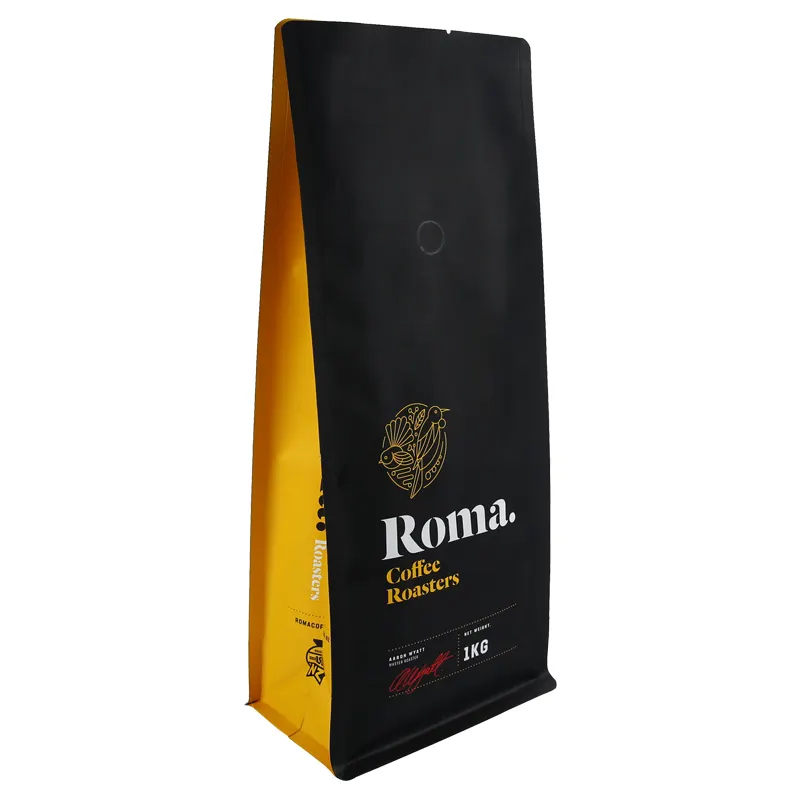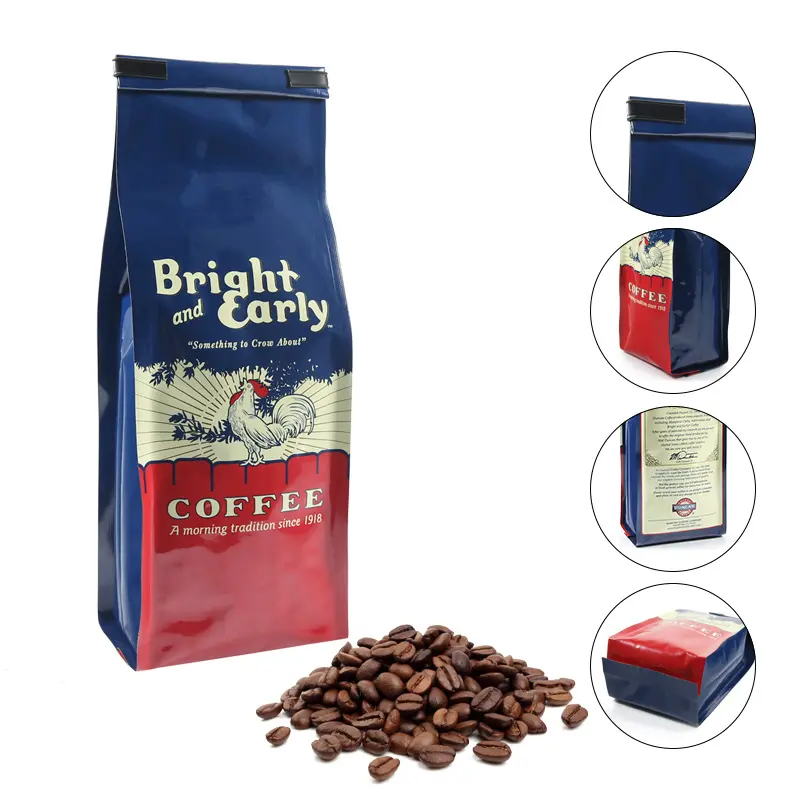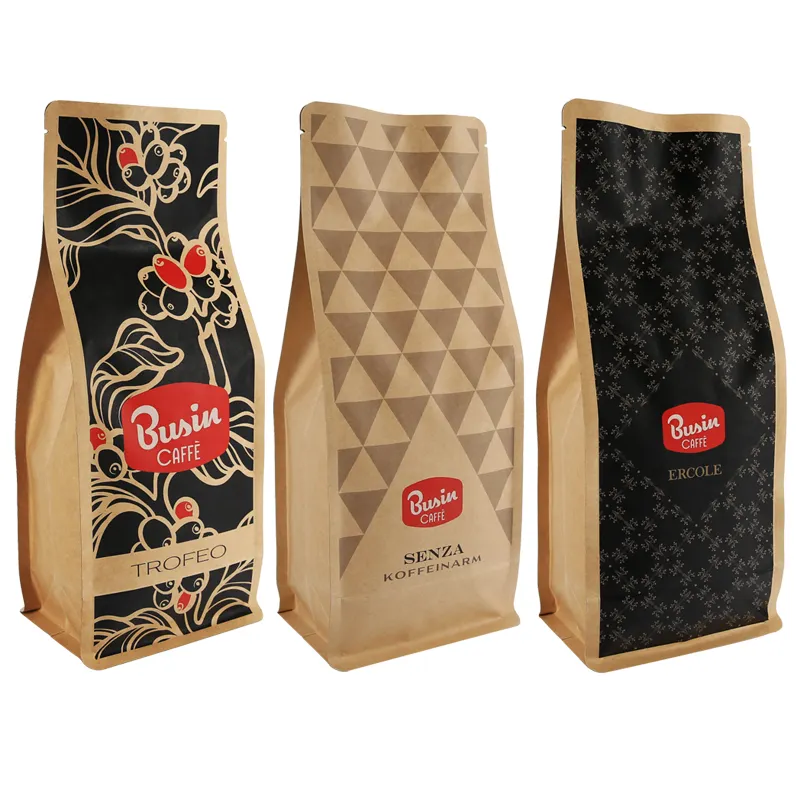
- Coffee Packaging Bags
- Baby Food Packaging Bags
- Tea Packaging Bags
- Frozen Food Packaging Bags
- Protein Powder Packaging Bags
- Spice Packaging Bags
- Rice Packaging Bags
What are you looking for?
Coffee packaging bags are very important in the coffee industry. They help keep the beans fresh and flavorful. They also show the brand’s identity and values.
As consumers become more interested in sustainability, design, and functionality, coffee packaging choices are increasingly important.
This article looks at important aspects of coffee packaging bags. It covers eco-friendly materials, freshness technologies, design trends, user convenience, and transparency.

In recent years, there has been a significant shift towards sustainable packaging solutions in the coffee industry. More consumers care about how their purchases affect the environment. This has led to a demand for eco-friendly coffee packaging bags.
Brands are responding by using recyclable, biodegradable, or reusable materials. For instance, recyclable paper, biodegradable plastics, and compostable films are becoming popular choices.
These materials not only reduce waste but also align with the values of environmentally conscious consumers. By choosing sustainable packaging, brands can enhance their reputation and appeal to a broader audience.
But in order to keep the freshness of coffee beans, we suggest to limit the bag capacity to 250g at most. Because the barrier performance of the bag will significantly decrease without the use of Aluminum foil.

Maintaining the freshness of coffee is important and packaging plays a vital role in this. Technologies like one-way valves and vacuum packaging are essential for preserving the flavor and aroma of coffee beans.
One-way valves let gases leave the bag but keep air out. This stops oxidation and keeps the coffee fresh.
Vacuum packaging, on the other hand, removes air from the bag, creating a vacuum seal that extends the shelf life of the coffee.
These technologies ensure that consumers enjoy the best possible coffee experience, from the first cup to the last.

The design of coffee packaging bags is more than just aesthetics; it reflects the brand’s identity and values. A well-designed packaging bag can communicate the brand’s story, ethos, and commitment to quality.
Current design trends in custom coffee bag packaging include minimalist aesthetics, eco-conscious materials, and designs that tell a story. For example, using earthy tones and natural textures can convey a brand’s commitment to sustainability.
Additionally, using unique patterns and illustrations can make the packaging stand out on the shelf and attract consumers’ attention. By investing in thoughtful design, brands can create a strong visual identity and build a loyal customer base.


User convenience is a critical factor in coffee packaging. Features like easy-open designs, resealable closures, and ergonomic shapes enhance the overall consumer experience.
Easy-open designs let consumers access their coffee easily. Resealable closures help keep the coffee fresh for a longer time. Ergonomic shapes make the packaging comfortable to handle and store.
These features not only improve functionality but also demonstrate the brand’s commitment to customer satisfaction. By prioritizing user convenience, brands can differentiate themselves in a competitive market and foster customer loyalty.

Transparency in coffee packaging is essential for building trust with consumers. Clear labeling, including information about the coffee’s origin, roast date, and flavor notes, helps consumers make informed choices.
This transparency allows consumers to understand the quality and characteristics of the coffee they are purchasing.
For example, knowing where the coffee comes from can help you understand its flavor. The roast date shows how fresh it is. By providing detailed and accurate information, brands can establish credibility and foster a sense of trust with their customers.

In conclusion, coffee packaging bags are important for the coffee industry. They affect freshness, sustainability, design, and user experience.
Brands can meet changing consumer needs by using eco-friendly materials. They should also adopt modern preservation methods and smart design.
Additionally, they need to prioritize user convenience and transparency. This approach helps them stand out in a competitive market.
As the industry keeps innovating, coffee packaging will become more important. It will be a key factor in the success of coffee brands.
-Eco-friendly coffee packaging bags often use materials like recyclable paper, biodegradable plastics, and compostable films. These materials of eco friendly packaging bags help reduce environmental impact and meet consumer demand for sustainable products.
-One-way valves allow gases to escape from the bag without letting air in. This helps maintain the freshness of the coffee by preventing oxidation and preserving the flavor and aroma, like the flat bottom coffee bag with valve.
-Current design trends include minimalist aesthetics, eco-conscious materials, and designs that reflect the brand’s values and story. These trends appeal to consumers who prioritize sustainability and brand authenticity.
-Clear labeling on coffee packaging, like the origin, roast date, and flavor notes, helps consumers make better choices. It builds trust and allows consumers to understand the quality and characteristics of the coffee they are purchasing.
-Easy-open designs, resealable closures, and ergonomic shapes improve user experience. They make the packaging more convenient and functional. These features ensure that the coffee remains fresh and easy to access.